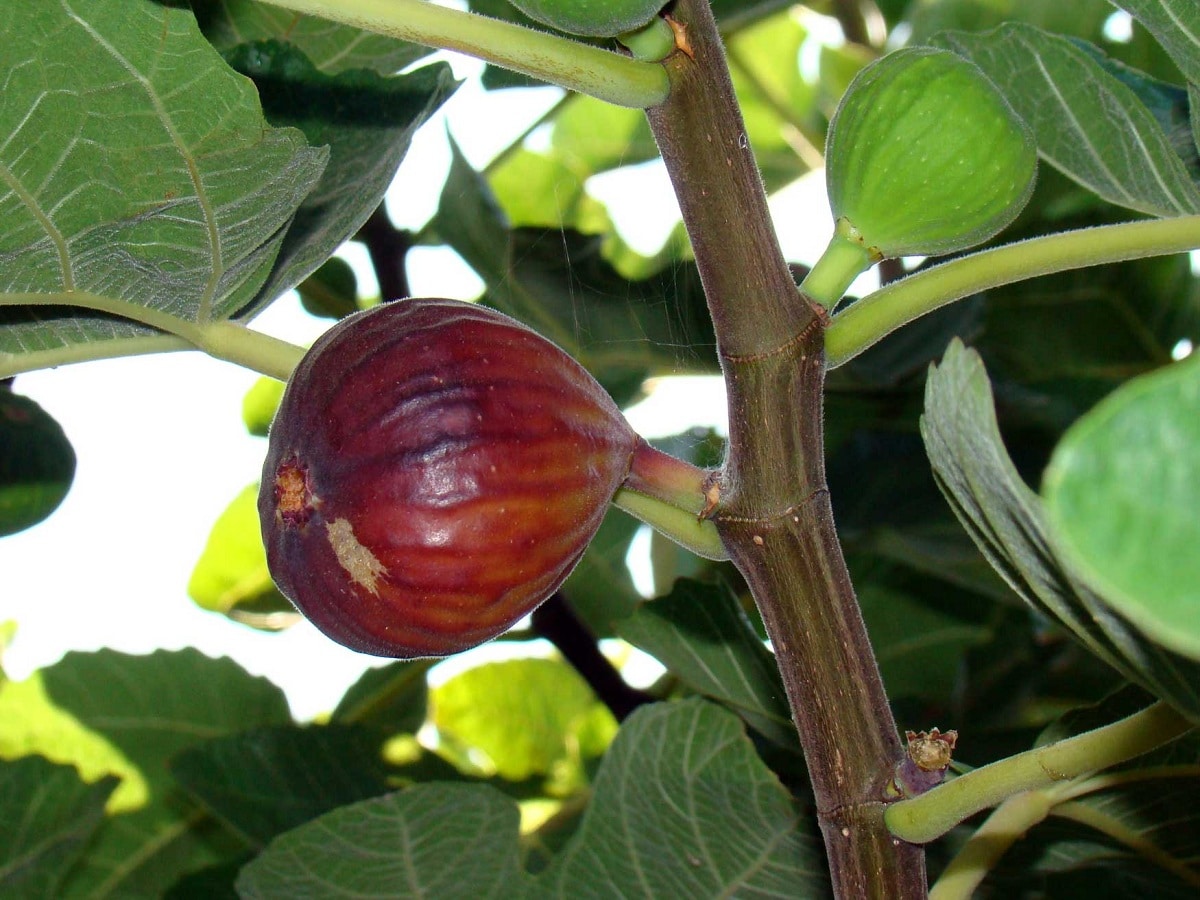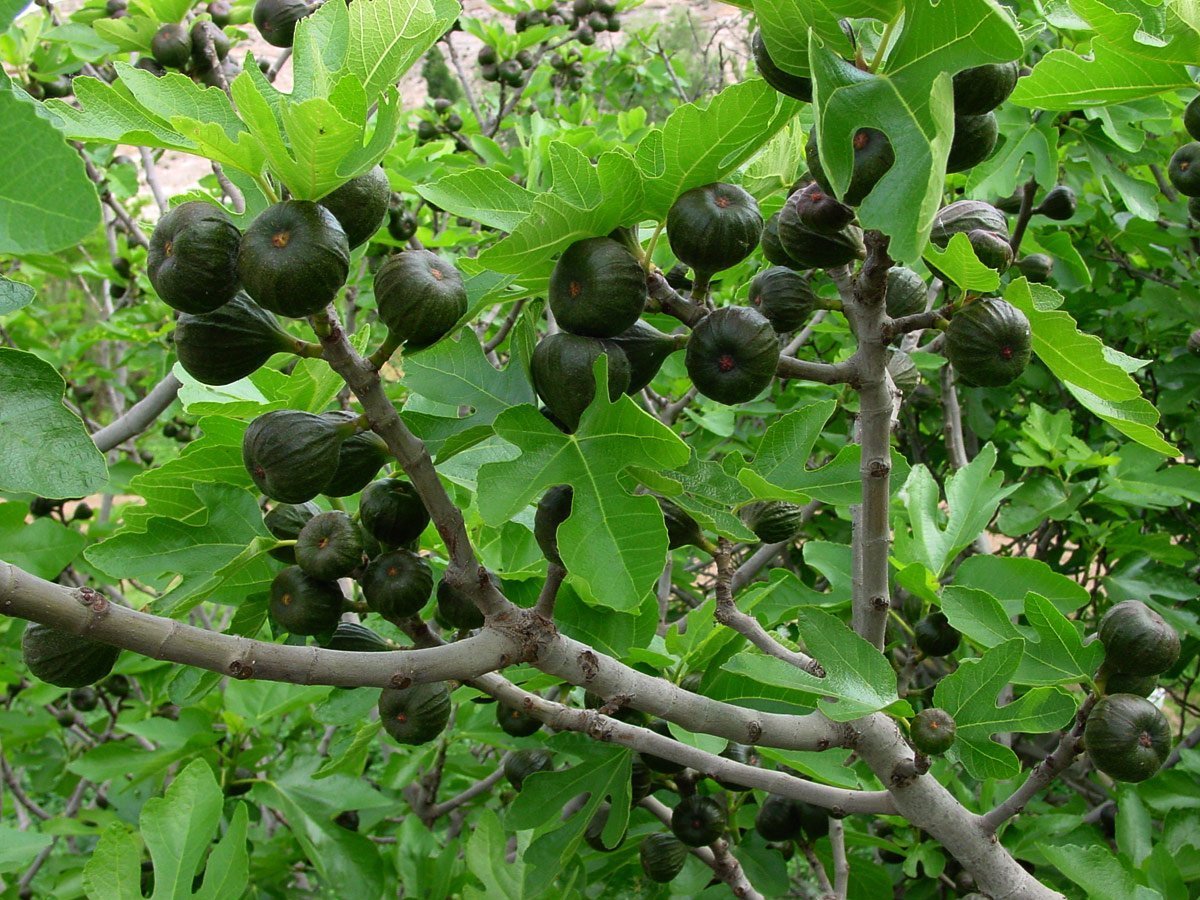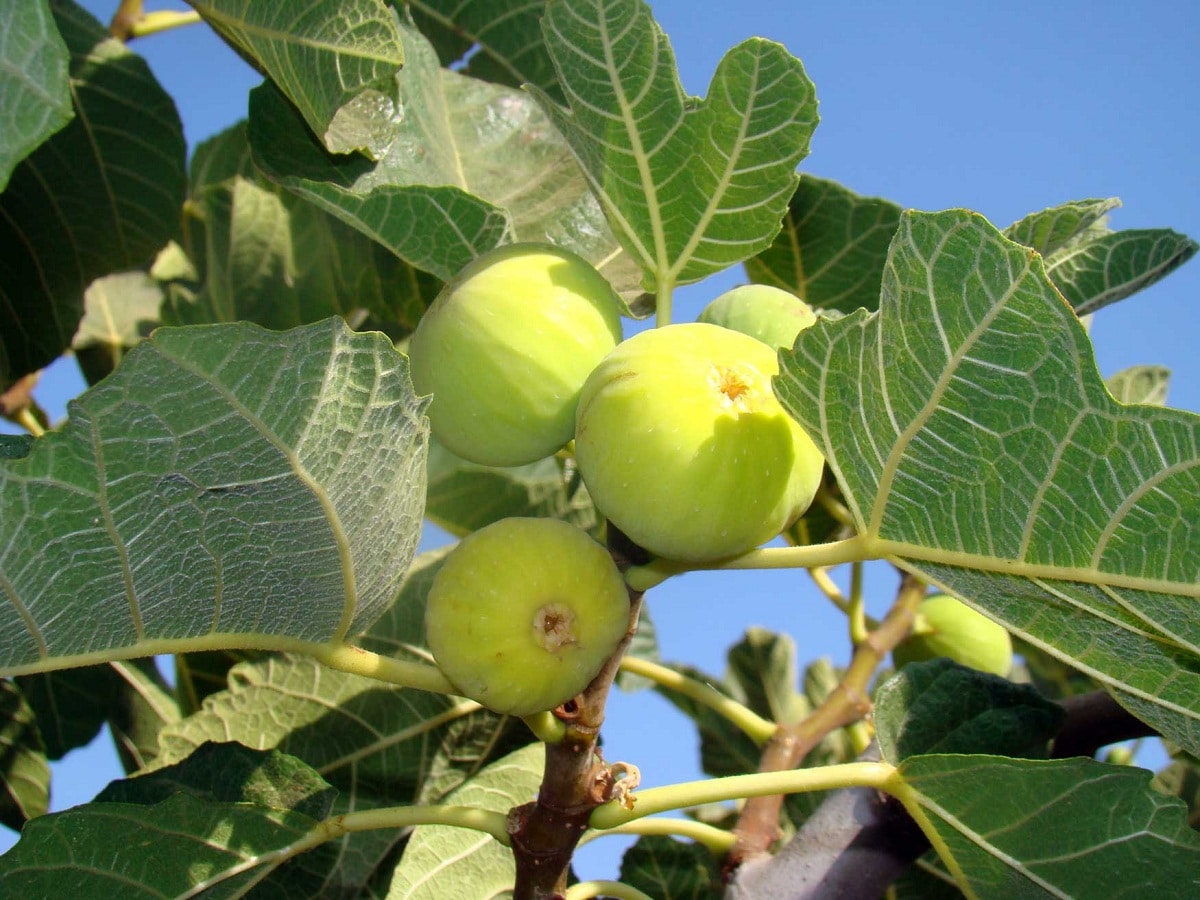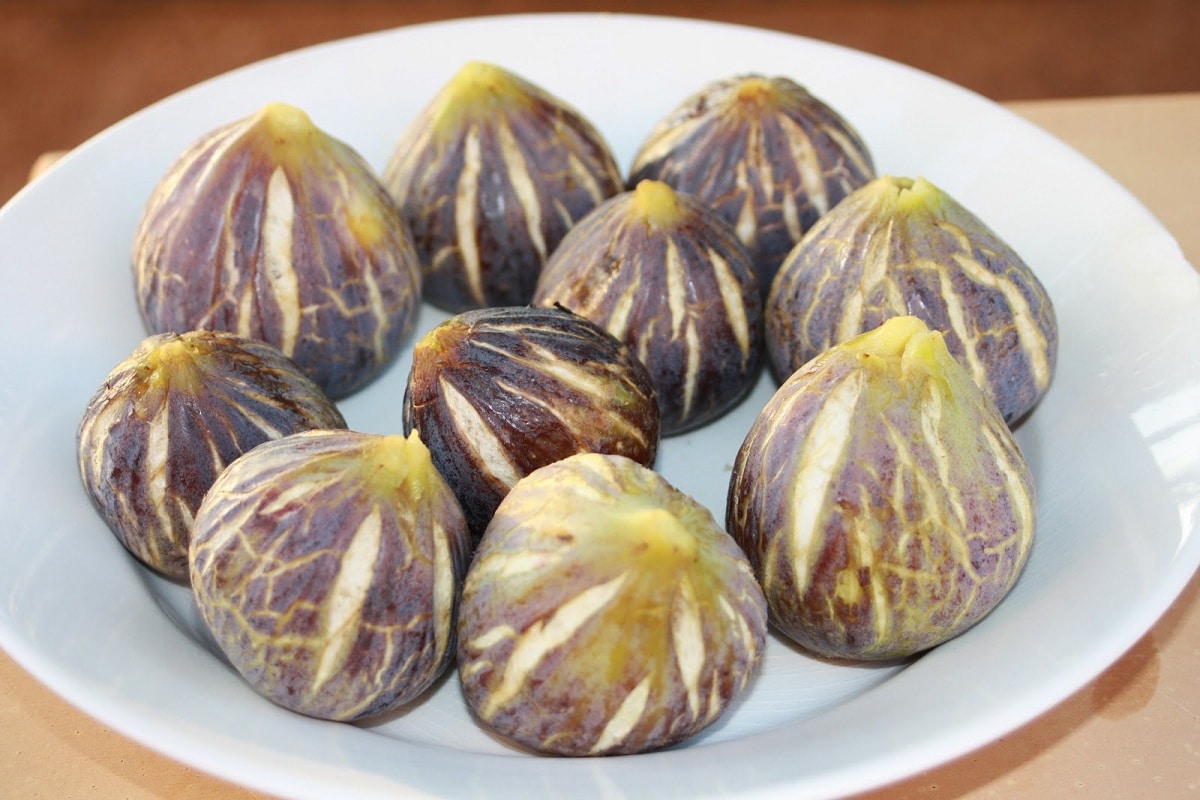
The fig tree is a deciduous fruit tree whose fruits ripen in mid to late summer (August or September in the Northern Hemisphere). They have an exquisite flavor, very fresh, ideal to end the warmest season of the year in the sweetest way. And it is that, in addition, they support drought very well and do not require hardly any care. But did you know that there are many varieties of fig trees?
In this article we are going to show you the ones that are easier to get and what their characteristics are.
Key features

The fig tree, known by the scientific name of ficus carica, it is a tree that grows to 4-5 meters. It is native to Southwest Asia, although today it has become naturalized in the Mediterranean Region. It is often used to decorate gardens and orchards that are in places where rainfall is rather scarce, since it not only produces delicious fruits, but it can also provide a lot of shade if it is pruned (leaving the trunk clean and forming a parasol glass).
As we said, there are many varieties of fig trees, which differ mainly by the color of the fig's skin, as well as its flavor (more or less sweet). All of them require the same care, so you only have to choose the one that interests you the most when you go to a nursery.
The fig tree is originally a monoecious species, although it is currently dioecious. A monoecious species means that it has flowers of both sexes within the same plant and dioecious that has flowers of each sex on separate plants. Within the plants that have male flowers we find the male fig trees and those that are cultivated are those with female flowers. All the varieties of fig trees that are currently marketed in our country are usually self-fertile. This means that they can fertilize themselves. In other countries, other specimens are needed for there to be fertilization and the fruits can reach maturity.
The fertilization technique used is called caprification. This technique consists of carrying both branches with some male fruits on the branches of female plants. We know that small figs carry a small hymenopteran that contributes to pollination. Therefore, thanks to the maturity they achieve, they can make their fruits grow, since otherwise they would drop the fruits prematurely.
Varieties of fig trees in Spain

The varieties that are marketed in Spain do not need the aforementioned caprification technique. This is because they are self-fertile and the fruits are capable of maturing without the need to be fertilized by the ovules of their flowers. If we want to buy a fig plant, the first thing we must have is a catalog available from the points of sale that are specialized in it. Today it is not a very expanded market since there are few professionals dedicated exclusively to the reproduction and sale of different varieties of fig trees.
We can see this as a disadvantage, but it is the opposite. Thanks to this specialization we can have a garden in our house with different varieties planted that guarantee us an excellent production. Although the higher or lower productivity and the production periods differ between some varieties, the raw productivity will be much better.
The most common varieties of fig trees in Spain are classified into two groups. This classification it depends on whether or not they bear two kinds of fruit a year. On the one hand we call common fig trees those that only produce one harvest per year. Normally, this harvest is centered between the months of August and September. On the other hand, we have biferous fig trees. This variety is also known by the common name of brevales since they have the particularity of offering two harvests a year. The first begins in the months of June to July and they give figs instead of figs. The second harvest takes place between August and October and is called figs.
Among all these trees we see, some figs are very late and do not ripen well in the autumn season. This keeps them well throughout the winter and fully re-matures the following summer. The figs are fruits highly appreciated for their sweet taste. This makes have collections and tastings before fall time.
The best known varieties of fig trees

Common fig trees
They are the ones that grow spontaneously in the Mediterranean. These trees bear only figs, from August to October in the Northern Hemisphere. The main varieties of Spain are:
- True: yields green figs. They ripen late, so you can taste them until November. Of course, you should know that autumn rains can spoil many fruits.
- WhiteFigs are white in color, and you can keep them dry.
- hard hideFigs are black in color, with tough skin, and ripen in early autumn.
- Kadota Fig: This variety comes from Italy and is known by the name of Dotato. Here the figs have a greenish-yellow skin color and the flesh is purple in color.
- Variety of celestial fig: It comes from Mexico and California and the fruit turns purple while its flesh turns pink with a sweet flavor.
Breval figs or bacoreras
They are the most appreciated. They are larger than figs, and can also be kept dry. The main varieties that you will find in Spain are:
- Strain: figs are black, and have a rounded shape. They have a tendency to scratch and crack.
- goina: the figs are black but with a somewhat redder neck. They fall easily from the tree.
- Noral: the figs are somewhat greenish, of lower quality than the previous ones. In fact, they are practically not planted.
- BrownTurkey: its fruits are pear-shaped and grown mainly in Israel, Italy and California. The skin here of the figs is dark reddish and their flesh purple. It is a fairly sweet and juicy variety.
As you can see, there are a few varieties of fig trees, so you can enjoy different flavors if you wish.
good post! we love figs! 🙂
We are glad you like the post, Juan Vicente. Yes, the figs are delicious. And they almost fall like May water, I mean, with the intense heat of August, there is nothing like a few figs to sweeten the remainder of summer hehe
A greeting.
here in saltillo there is a small green fig with an almost transparent and very sweet pulp
They gave me two seedlings and they gave me in the first year, they are white figs, like figs, they have the shape of a pear and have a very sweet taste, it is a species that I did not know, I plan to make sweet this year. My children and grandchildren love this candy. I am from Argentina.
Enjoy them Osvaldo. We also have a fig tree that produces white figs, and the flavor is unique. Nothing to do with figs or black figs.
Greetings and thanks for stopping by 🙂
I am looking for a WHITE fig tree, which is especially good figs (figs interest me less) and which adapts to the dry and hot climate of the province of Ciudad Real, in Castilla La Mancha, thank you very much in advance, receive a cordial greeting
Hi, Felix.
See if you are interested in the seeds they sell on amazon (click here). If not, I recommend you search online nurseries.
Regards!